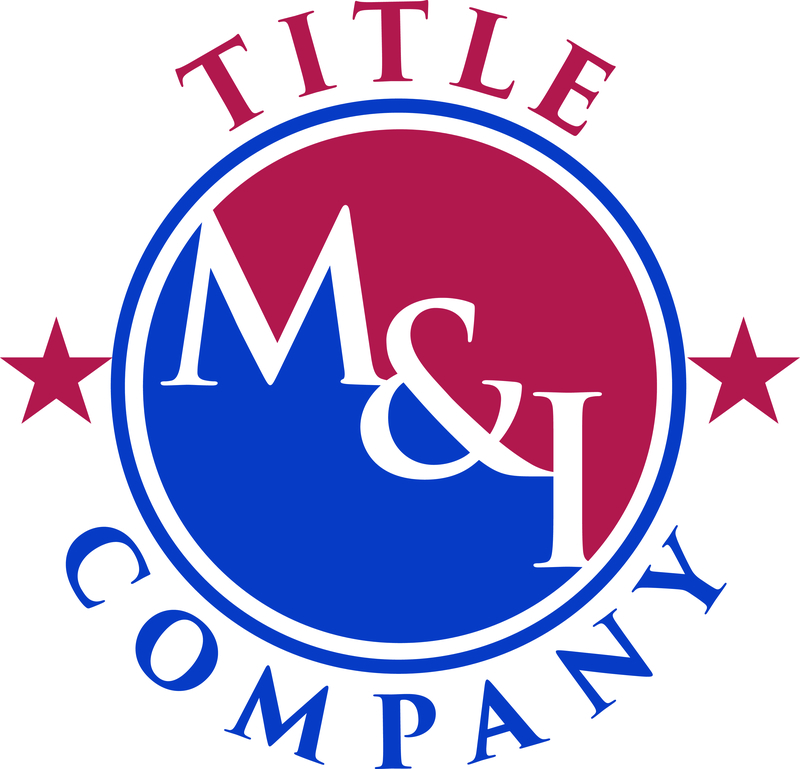Mark Fleming, Ph.D., Chief Economist for CoreLogic, in a presentation yesterday, said the housing market is not out of the woods yet as the potential of a double-dip in our economy increases and as 30 to 40 percent of economists feel there is a chance of another recession. Continue Reading →
|
|||
|
A report released today by CoreLogic shows that 17.30 percent (99,792) of all St. Louis homeowners with a mortgage were in a negative equity position in the second quarter of 2011, up slightly from 17.10 percent the prior quarter. Negative equity is also referred to as being “underwater” or “upside down” and refers to homeowners that owe more on their mortgages than the current value of their home. Radarlogic, real estate data and analytics company that frequently disagrees with the National Association of REALTORS® view of the housing market, released their RPX Monthly Housing Market Report for May 2011 yesterday and in it had a scorecard showing how their rather bleak predictions they made at the end of 2010 for the 2011 housing market were holding up. Unfortunately, as you will see below, it seems many of their predictions have been accurate and the housing market is performing as poorly as they expected in many areas. In Britain… I am not a “misery loves company” guy, nor a “grass on the other side is always greener” guy, but in this case, it’s good to know the grass is greener in the U.S., at least as it relates to the housing market. Granted, I may be getting a little desperate for some good news, but a study I saw on the housing market in Britain by Zoopla.co.uk got my attention when I saw that 80 percent of the 4.32 million homes bought in Britain since 2006 are now worth less than the buyer paid. My first Continue Reading → A report released this morning by CoreLogic shows that the current residential “shadow” inventory as of April 2011 declined to 1.7 million units, down from 1.9 million units a year ago. This current shadow inventory represents a 5 month supply, same as the supply a year ago. A report released today by CoreLogic shows that 17.10 percent (97,772) of all St. Louis homeowners with a mortgage were in a negative equity position in the first quarter of 2011, up slightly from 17.0 percent the prior quarter. Negative equity is also referred to as being “underwater” or “upside down” and refers to homeowners that owe more on their mortgages than the current value of their home. Negative equity is the dominant factor driving the real estate market according to CoreLogic in it’s “U.S. Housing and Market Trends” report that was released today. According to the report, as of the 4th quarter of 2010, over 11 million (23 percent) of U.S. homeowners with a mortgage were in a negative equity position, meaning they owe more on their mortgages than the current value of their home. Over the past year or so there have been dozens, if not hundreds, of stories questioning the manner in which lenders were handling the servicing of their loans, particularly those of underwater borrowers, as well as the foreclosure practices of many including “robo-signing” of foreclosure affidavits. Next came the lawsuits and now, this week, the Federal Reserve Board announced formal enforcement actions requiring 10 banking organizations to address “a pattern of misconduct and negligence related to deficient practices in residential mortgage loan servicing and foreclosure processing.” Most Americans are opposed to the idea according to recent survey There have been several stories published on this site concerning borrowers that are “underwater” (owe more on their home than it is currently worth) and whether they should simply “walk-away” or do a “strategic default” in order to get out from under their problem. We have published views from both sides of this argument and both sides have made good points in support of their position. However, according to a survey conducted by FindLaw.com, it is clear that the majority of Americans, 60 percent to be exact, believe it Continue Reading → Today, the U.S. Department of Housing and Urban Development and U.S. Census Bureau released new home sales data for February 2011 showing a decrease of 16.9 percent from the month before, and a decrease of 28.0 percent from a year ago. The seasonally-adjusted new home sales rate for February was 250,000 homes. The supply of new homes on the market increased from an adjusted 7.4 month supply the month before to a 8.9 month supply in February. The median new home price decreased for the month to $202,100, a 13.9 percent decrease from a revised median price of $234,800 the Continue Reading → A report released this morning by CoreLogic shows negative equity, after decreasing for the three prior quarters, increased in the fourth quarter of 2010 for residential properties. The CoreLogic reports that 11.1 million, or 23.1 percent, of all residential properties with mortgages were in negative equity at the end of the fourth quarter of 2010, up from 10.8 million and 22.5 percent in the prior quarter. Today, the U.S. Department of Housing and Urban Development and U.S. Census Bureau released new home sales data for January 2011 showing a decrease of 12.6 percent from the month before, and a decrease of 18.6 percent from a year ago. The seasonally-adjusted new home sales rate for January was 284,000 homes. The supply of new homes on the market increased from an adjusted 7.0 month supply in December to a 7.9 month supply in January. The median new home price decreased for the month to $230,600 a 1.8 percent decrease from a revised median price of $235,000 the month Continue Reading → Today, the U.S. Department of Housing and Urban Development and U.S. Census Bureau released new home sales data for December 2010 showing an increase of 17.5 percent from the month before, but a decrease of 7.6 percent from a year ago. The seasonally-adjusted new home sales rate for December was 329,000 homes, a 17.5 percent increase from November’s revised rate of 280,000 homes. The supply of new homes on the market decreased from an adjusted 8.4 month supply in November to a 6.9 month supply in December. The median new home price increased for the month to $241,500 whopping 12.0 Continue Reading → The real estate market has not been very nice to us over the past 3 years or so and we are all anxious to see the light at the end of the tunnel. With that in mind, and 2011 in front of us, where is the real estate market headed in 2011? Before I take my humble stab at answering this question I need to remind you I am not an economist nor do I have a PhD behind my name, in fact I have nothing behind my name. All I can offer is a whole lot of experience “in Continue Reading → As 2010 quickly comes to an end I sat here early this morning pondering the real estate market and reading reports on the housing industry. One thing that caught my attention was an article titled “The Mortgage Interest Deduction and Negative Equity” by Ted Gayer, the co-director of economic studies at the Brookings Institute (and occasional contributor to this blog). Ted’s article made some interesting points related to the mortgage interest deduction, negative equity and home-ownership rates in the U.S. In his article Ted states “It seems semantically incorrect to call someone who owes more on an asset than it’s Continue Reading → A report released this morning by CoreLogic shows negative equity declined in third quarter of 2010 for residential properties, marking the third-consecutive quarterly decline. The CoreLogic reports that 10.8 million, or 22.5 percent, of all residential properties with mortgages were in negative equity at the end of the third quarter of 2010, down from 11.0 million and 23 percent in the second quarter. While the decline is good news, the bad news is that the report states the decline is “due primarily to foreclosures of severely negative equity properties rather than an increase in home values.” Report by Zillow estimates that U.S. Homes have now lost $9 Tillion in value since Market Peak U.S. homes are expected to lose more than $1.7 trillion in value during 2010, which is 63 percent more than the $1 trillion lost in 2009, according to a report released by Zillow.com. That brings the total value lost since the market peaked in June 2006 to $9 trillion. Percentage of Homeowners Underwater Reaches New Peak; Length and Depth of Housing Downturn Approach Depression-Era Declines According to Zillow® Real Estate Market Reports for 3rd Quarter 2010… The United States housing market continued its long decline in the third quarter with home values falling for the 17th consecutive quarter, according to Zillow Real Estate Market Reports. With home values 25 percent below their June 2006 peak, the current housing downturn is approaching Great Depression-era declines, when home values fell 25.9 percent in five years. Dennis Norman The U.S. Department of the Treasury and the Department of Housing and Urban Development today released their “October 2010 Scorecard” on the “Obama Administration’s Efforts to Stabilize the Housing Market”. The scorecard points out the success of “The President’s housing market recovery efforts” but does point out that “data in the scorecard also show that the recovery in the housing market continues to remain fragile.” Dennis Norman A report by CoreLogic shows that in June 2010 almost one in five (19.3 percent) of the home sales in St. Louis are distressed home sales, such as foreclosure or a short sale. The report cautions that recent data showing improvements in negative equity, serious mortgage delinquency and a decrease in market share of short-sales, has been distorted as a result of the short-term boost in the “non-distressed” housing market by the homebuyer tax credit program, which recently ended. Dennis Norman While many us have been worrying about what is happening to the value of our homes, how to deal with being underwater on a mortgage or even facing the loss of a home, there are many people, families included, in the U.S. whose worry is much more basic….where to find safe shelter for the night. Dennis Norman After a couple of days of writing about bad reports on the housing market (existing home sales and new home sales to name two) I’m excited that I actually get to write something today that is positive! According to newly released data from CoreLogic, the percentage of homeowners in the U.S. with negative equity in their homes declined slightly at the end of the second quarter of 2010 making it the second consecutive month of declines. According to the CoreLogic report, 11 million, or 23 percent, of all residential properties with mortgages were in negative equity Continue Reading → Dennis Norman This week I attended an event at the St. Louis Association of REALTORS® in which Lawrence Yun, Chief Economist for the National Association of REALTORS® was the featured speaker and gave his take on the housing market as well as his housing market outlook. Dennis Norman Asking this question now is about like asking a newly divorced person their thoughts on marriage….nonetheless in challenging times many of us reflect upon our past investment decisions, investment philosophy, etc and see what can be learned from our past to help us in the future. Dennis Norman According to a report released this morning by RealtyTrac there were 1,961,894 foreclosure filings in the first six months of 2010 on 1,654,634 housing units in the U.S. This reflects a 5 percent decrease from foreclosure activity for the prior 6 month period but is an 8 percent increase from the same period of 2009. What is just a sickening statistic in the report is that, during the first six months of 2010, 1.28 percent of all housing units in the U.S., or one in 78, received at least one foreclosure filing during that period. Dennis Norman So, you have the money to pay on your ‘underwater’ mortgage, or to afford the reduced payment amount offered to you under the HAMP program, but think, rather than throw good money after bad you’ll just do like so many borrowers are doing and ‘walk-away‘? Well, if you have any plans to buy a house again in, say the next seven years, particularly with a Fannie Mae loan, think again. Today Fannie Mae announced policy changes to “encourage borrowers to work with their servicers”. These policy changes include, a seven-year “lock-out” period for borrowers that Continue Reading → UPDATE- June 2, 2010: The National Association of REALTORS obtained answers from the Treasury Department on 3 common questions about HAFA: agents are not permitted to rebate a portion of their commission to the buyer, sellers who are real estate agents must list their home for sale with another broker, not their own broker, and the incentive allowed for subordinate lien holders (6% of any one subordinate lien, up to a total of $6,000 for all subordinate liens) is a hard cap and may not be supplemented from any source. Dennis Norman In March I did an update on Continue Reading → Dennis Norman According to a report released by CoreLogic, there were 11.2 million homeowners that were in a negative equity, or “underwater“, position on their mortgages as of the end of the first quarter of this year. This number is equal to 24 percent of all homeowners with a mortgage in the U.S., which is the same percentage as the prior quarter, however the actual number of underwater borrowers was down slightly from 11.3 million borrowers that were underwater in the prior quarter. In addition, there are an additional 2.3 million borrowers that have less than five percent Continue Reading → Dennis Norman Last week HUD announced changes to FHA home loan programs to provide refinancing options to homeowners who owe more than their home is worth. Under FHA’s new plan, existing underwater homeowners can refinance their existing non-FHA loan into a FHA loan as long as they are current on their loan and their current lender reduces their total mortgage debt by at least 10 percent of the loan amount. The total mortgage amount for the borrower after refinancing cannot be greater than 115 percent of the current value of the home, bring the loan amount for Continue Reading → Dennis Norman Back in early December I did a post about a new program that was announced in November, the Home Affordable Foreclosures Alternative (HAFA) Program which is scheduled to go into effect April 5, 2010. There was recently supplemental documentation published as well as FAQ’s about the program and I have to admit, it seems to me the government is getting it right with this program. THE HAFA PROGRAM: The Home Affordable Foreclosure Alternatives Program provides financial incentives to loan servicers as well as borrowers who do a short-sale or a deed-in-lieu to avoid foreclosure on Continue Reading → |
|||
|
St Louis Real Estate Search® St Louis Home Values St. Louis Real Estate News Contact Us Copyright © 2025 Missouri Online Real Estate, Inc. - All Rights Reserved St Louis Real Estate News is a Trademark of Missouri Online Real Estate, Inc. Missouri Online Real Estate, Inc. 3636 South Geyer Road - Suite 100, St Louis, MO 63127 314-414-6000 - Licensed Real Estate Broker in Missouri The owner and authors this site are providing the information on this web site for general informational purposes only and make no representations, warranties (expressed or implied) or guarantees of any kind whatsoever, as to the accuracy or completeness of any information on this site or of any information found by following any link on this site. Furthermore, the owner and authors of this site will not be liable in any manner whatsoever for any errors or omissions in information on this site, nor for the availability of this information. Additionally the owner and authors of this site will not be liable for for any losses, injuries or damages in any way from the display or use of this information or as the result of following external links displayed on this site, or by responding to advertisements displayed, or contained, on this site
In using this site, users acknowledge and agree that the information on this site does not constitute the provision of legal advice, tax advice, accounting services, investment advice, or professional consulting of any kind nor should it be construed as such. The information provided herein should not be used as a substitute for consultation with professional tax, accounting, legal, or other competent advisers. Before making any decision or taking any action on this information, you should consult a qualified professional adviser to whom you have provided all of the facts applicable to your particular situation or question. None of the tax information on this web site is intended to be used nor can it be used by any taxpayer, for the purpose of avoiding penalties that may be imposed on the taxpayer. |
|||


